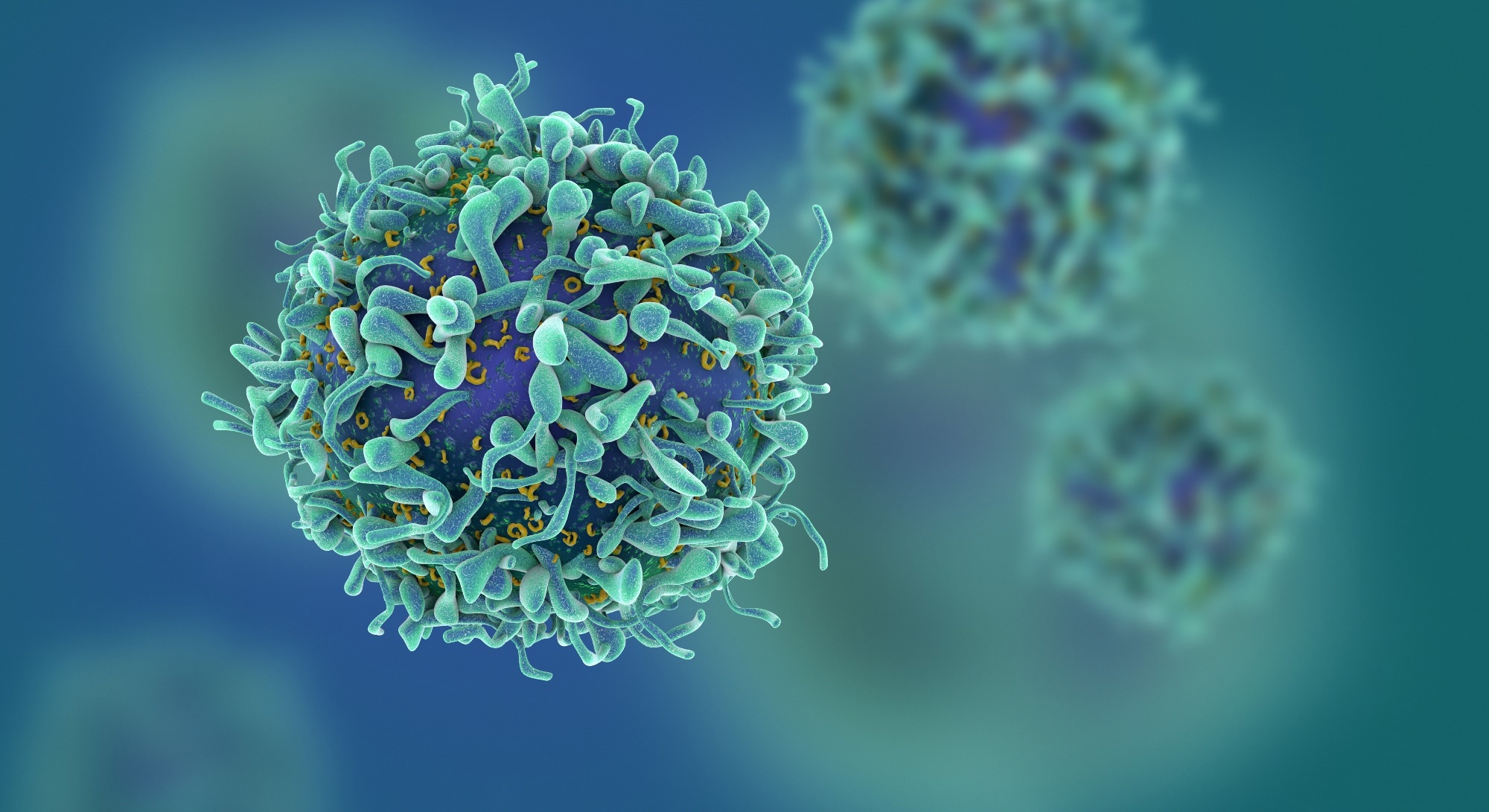In a recent review published in Experimental & Molecular Medicine, researchers described the dual role of cell cycle and apoptosis regulator 2 (CCAR2), a nuclear multidomain protein with six functional domains, in cancer progression as a tumor suppressor and promoter.
 Study: Mechanistic insights into the dual role of CCAR2/DBC1 in cancer. Image Credit: fusebulb/Shutterstock.com
Study: Mechanistic insights into the dual role of CCAR2/DBC1 in cancer. Image Credit: fusebulb/Shutterstock.com
Additionally, they discussed CCAR2 domain structures, its interaction partners, and how it regulates activities of transcription factors (TFs), transcriptional coregulators, and epigenetic modifiers.
TFs control gene expression by binding to enhancers, i.e., regulatory DNA sequences, and recruiting coregulators to their target genes. Transcriptional coregulators are components of multiprotein complexes that transmit and integrate cell signals by functioning as scaffolds to attach posttranslational modifying enzymes to specific transcription sites.
Likewise, epigenetic modifiers are enzymes that alter chromatin accessibility to regulate gene expression by modifying TFs and coregulators posttranslationally.
Background
Previous studies postulated that CCAR2 is a potential tumor suppressor because it stimulated cellular apoptosis by activating and stabilizing p53, the most frequently mutated gene in human cancers.
Reports also suggested that it played crucial physiological and pathological roles in DNA repair, aging, metabolism, circadian clocks, and cell proliferation; thus, also considered a potential therapeutic target in multiple types of cancer.
However, many studies have demonstrated that CCAR2 also functions as a tumor-promoting coregulator by activating oncogenic TFs and regulating the catalytic activity of epigenetic modifiers.
CCAR2 domain structure and interaction partners
It is 923 amino acids long protein with six domains, an S1-like RNA-binding domain, a nuclear localization signal (NLS), a leucine zipper (LZ) motif, a Nudix homology domain (NHD), an EF-hand domain, and a coiled-coil domain.
Due to their highly structured nature, all these functional domains exhibited limited flexibility. Nonetheless, these govern all CCAR2 functions and interactions with proteins involved in cellular processes such as transcription, epigenetic regulation, apoptosis, DNA repair, metabolism, and circadian rhythms.
In particular, the NTD of CCAR2 functions as a platform through which it binds with most of its interaction partners, estrogen receptors (ER)α/β, nuclear factor κB (NF-κB), β-catenin, breast cancer type 1 (BRCA1), silent mating type information regulation 1 homolog (SIRT1), and checkpoint kinase 2 (CHK2).
Dual function of CCAR2 as tumor promoter and suppressor gene
Several studies have shown how CCAR2 contributes to tumor growth and progression.
According to one study, CCAR2 undergoes caspase-dependent cleavage during apoptosis, generating a truncated version lacking that localizes from the nucleus to the cytoplasm, sensitizing cells to apoptotic cell death.
Thus, CCAR2 mutations inducing resistance to apoptosis promotes tumor growth and progression. Two other studies identified CCAR2 as a SIRT1-binding protein whose interaction inhibited the latter's deacetylase activity and promoted p53 and forkhead box O3 (FOXO3) acetylation after DNA damage. FOXO3 is a gene-encoding protein associated with aging and rhabdomyosarcoma.
It activated p53-mediated apoptosis in multiple cancer cell lines. Similarly, studies have demonstrated inhibition of SIRT1 by CCAR2 through enhanced cellular Myc (c-MYC)-induced apoptosis, another proto-oncogene.
Another cancer study, the cancer genome atlas (TCGA), revealed that CCAR2 gene mutations are often associated with wild-type p53 retention in several cancer types, e.g., in 96% of prostate cancer cases. It further reinstated that the transcriptional stability of p53 regulates tumor suppression functions of CCAR2.
CCAR2 as a tumor-promoting coactivator
Tumors harboring p53 mutations grow more quickly and are more insensitive to therapy, indicating that p53 mutants acquire new oncogenic abilities to promote cancer. Thus, it is possible that loss of CCAR2 in cancer cells harboring mutant p53 suppresses the tumor and increases sensitivity to chemotherapy.
Its interaction with diverse proteins, including those encoded by well-recognized proto-oncogenes, e.g., Erα/β, and oncogenic TFs, such as c-Myc, explain the complex CCAR2 roles in tumorigenesis.
Erα and androgen receptor (AR) are TFs that mediate the effects of estrogens and androgens, respectively, and the development of hormone-related cancers. While CCAR2 depletion reduces tumorigenicity of Erα-negative breast cancer cells, its increased expression worsens relapse-free survival of Erα-negative and positive breast cancer patients, suggesting it plays important oncogenic roles in both types of breast cancer.
Likewise, CCAR2 acts as an AR coactivator, promoting its transcriptional activity and stability in prostate cancer and osteosarcoma cells. Thus, its depletion facilitates the progression of prostate cancers, including castration-resistant prostate cancer (CRPC). Further studies should explore how CCAR2 and SIRT1 regulate AR and AR-V7 by modulating their acetylation status.
CCAR2 acts as a coactivator in β-catenin-mediated colorectal cancer (CRC). It also functions as a coactivator of Prospero homeobox protein 1 (PROX1), known to promote CRC progression and metastasis.
Furthermore, CCAR2 depletion promotes DNA damage-triggered apoptosis in breast and some lung cancers. It also protects cancer cells from mitochondrial oxidative stress (MOS)-triggered apoptosis by interacting with heat shock protein 60 (HSP60), a prosurvival group I chaperone in mitochondria.
Conclusions
The roles of CCAR2 in tumorigenesis are conflicting and complex, owing to its ability to influence p53 mutation status and interact with multiple proteins involved in apoptotic and oncogenic signaling pathways.
Additionally, studies have linked CCAR2 functioning to metabolism and circadian clocks. Given CCAR2 is a multifunctional protein engaged in several physiological and pathological cellular processes, identifying drugs targeting CCAR2 could help combat several transcriptionally and epigenetically dysregulated cancers.
However, to establish CCAR2 as a therapeutic target for cancers, it is crucial to deepen the understanding of its genetic mutations that cause loss- or gain of function.